Affiliate disclosure: This post may contain affiliate links. Please see our Privacy Policy.
Wild Bergamot (Monarda fistulosa), also known as wild bee balm, is an edible and medicinal wildflower, and these beautiful blooms are tasty finds for foragers.
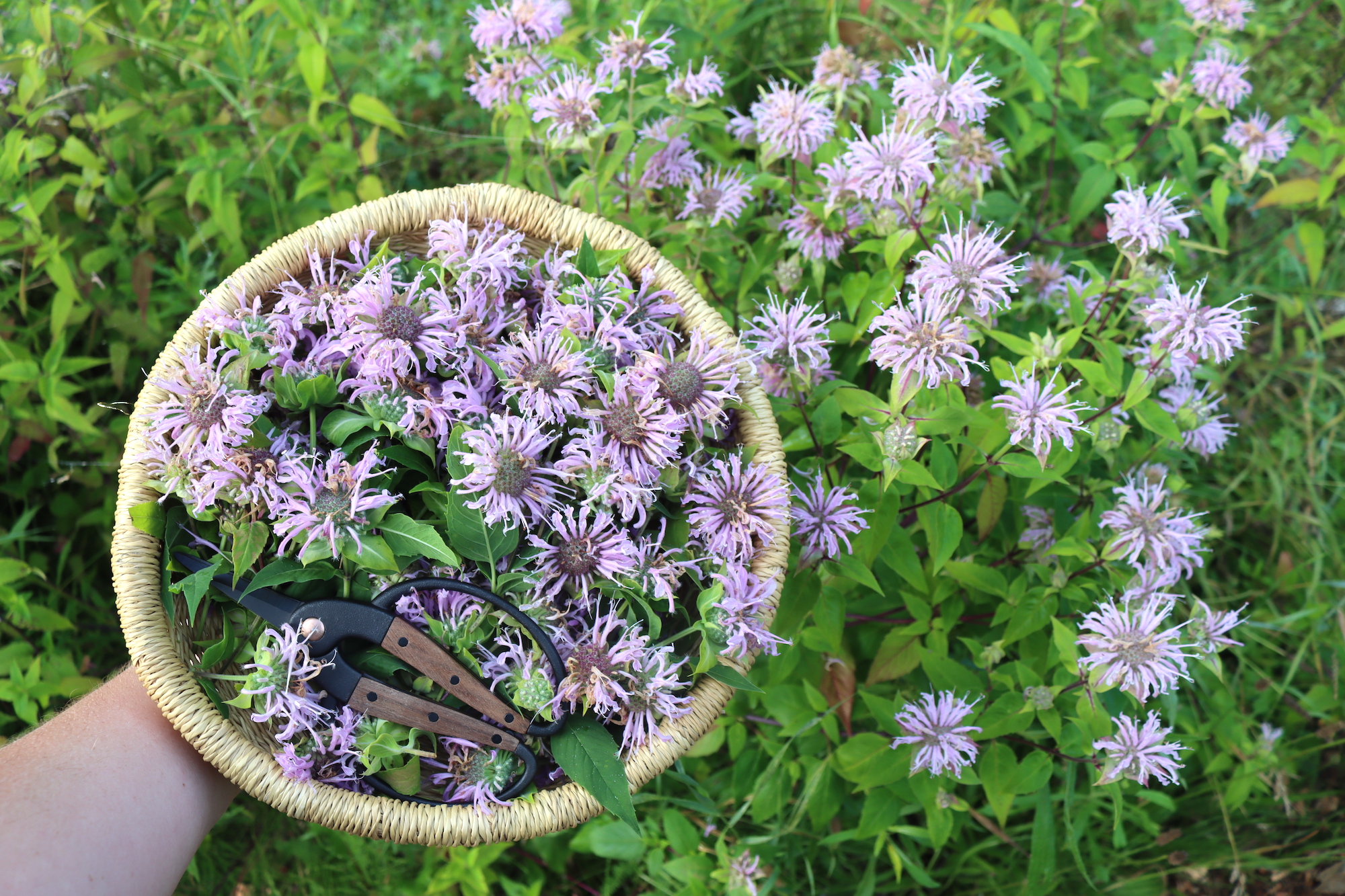
Cultivated bee balm is a stunning addition to your perennial flower beds, attracting bees and hummingbirds all summer long. But there’s also a wild native version that’s present all over the Eastern US, Canada and even down into Mexico.
These spicy blooms are full of wild foraged medicine, and they’re also a delicious snack out in the field.
What is Wild Bergamot?
Wild Bergamot, or Monarda fistulosa, is a perennial, herbaceous wildflower in the mint or Lamiaceae family. You may also hear this plant called Eastern Bergamot, Oswego Tea, Monarda, Bee Balm or Native Bee Balm.
It’s closely related to the cultivated Scarlet Bee Balm, which has bigger, bright red flowers (Monarda didyma).
Wild Bergamot is native to North America and has a fairly extensive range.
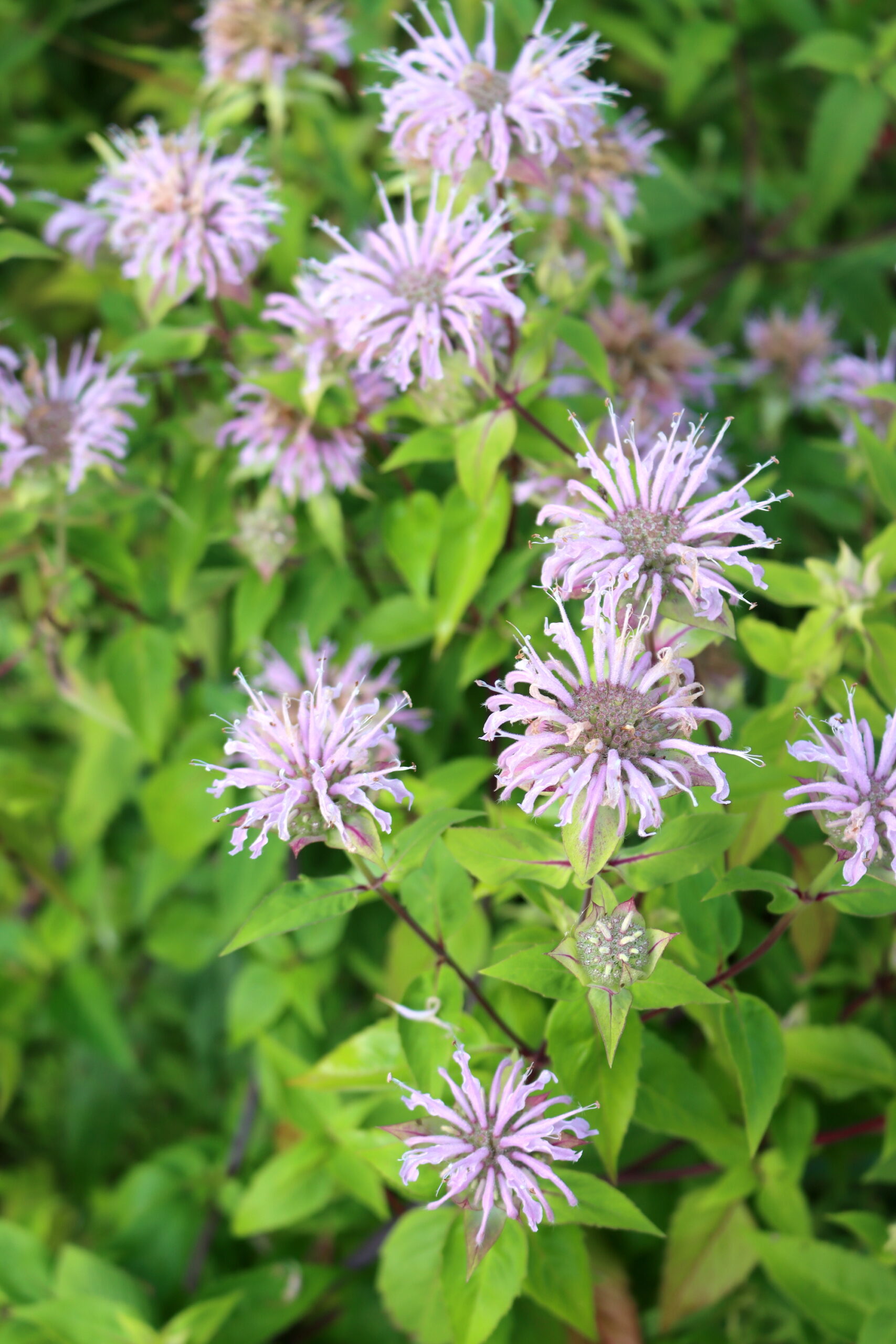
Is Wild Bergamot Edible?
Wild Bergamot is edible and medicinal. The entire plant is safe to use raw or cooked, internally or externally.
Wild Bergamot is also safe for animals, including dogs, cats, and livestock like cattle.
Wild Bergamot Medicinal Benefits
Native Americans were the first people to include Wild Bergamot in their medicinal practices. The Ojibwe would place a chewed wad of Wild Bergamot in their nostrils to relieve headaches. They also used the dried leaves to include sneezing to help with colds and added them to warm baths for babies. The Cherokee also used Wild Bergamot for headaches but would make a warm plaster for the forehead from it.
Many groups, including the Flambeau Ojibwe, Menomini, Meskwaki, and Hocak (Winnebago), boiled parts of Wild Bergamot or the whole plant and breathed in the steam and volatile oils to treat colds, bronchial infections, and sinus congestion.
The Teton Dakota and Blackfoot made tea from Wild Bergamot blossoms and leaves to treat stomach pains. The Blackfoot also applied the boiled leaves to acne. The Tewa preferred to dry and powder the plant for medicinal use. They would use the powder to treat headaches, fever, colds, and sore eyes.
Colonists quickly followed the Native American example and incorporated Wild Bergamot into their own practices. They usually used Wild Bergamot as a tea to induce sweating and soothe nausea, vomiting, colic, and flatulence.
Modern herbalists often use Wild Bergamot for its antimicrobial effects. Modern research has found that Wild Bergamot extract has inhibitory effects against harmful fungi and bacteria species such as Escherichia coli, Erwinia amylovora, and Candida albicans. Wild Bergamot’s antibacterial properties may also treat antibiotic-resistant middle ear infections in children.
Wild Bergamot may have many other beneficial properties, but unfortunately, we don’t fully understand them. One team looking to deepen our understanding of Wild Bergamot analyzed the composition of Wild Bergamot essential oil in 2020. They found that Wild Bergamot essential oil contains compounds usually associated with antimicrobial, antioxidant, and anti-inflammatory properties.
One of the compounds they found in Wild Bergamot essential oil is thymoquinone. A 2022 review of several studies found that this compound, found in Wild Bergamot, Thyme, and several other plants, also has the potential to be an important therapeutic agent against pancreatic cancer.
This same compound, thymoquinone, also gives Wild Bergamot antiviral properties. Researchers believe that it may be effective against herpes and influenza.
A 2023 study also supported Wild Bergamots’ potential anti-inflammatory effects. Researchers found that Wild Bergamot extract effectively treated inflammation in mouse granulosa cells.
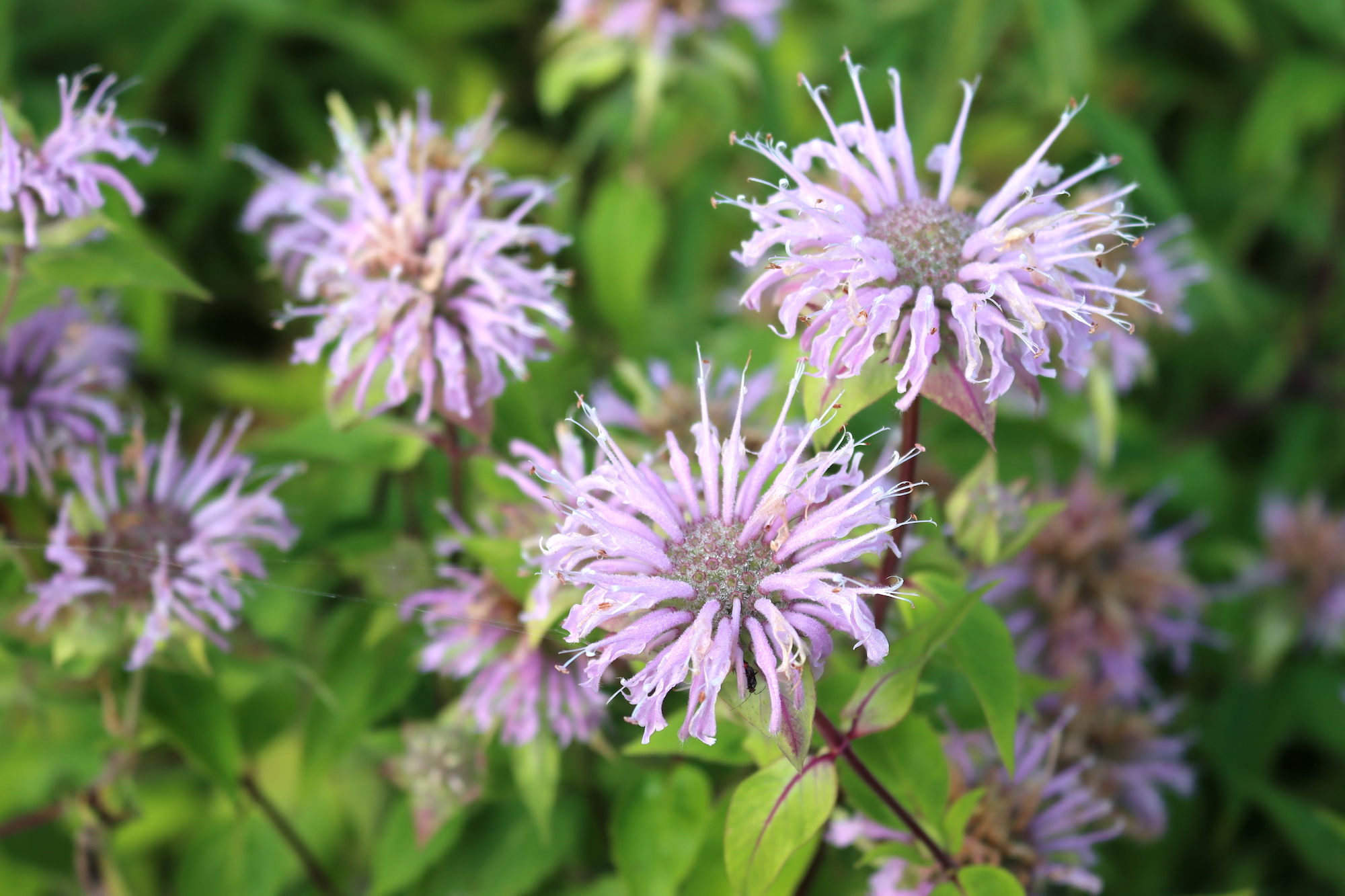
Where to Find Wild Bergamot
Wild Bergamot grows in southern Canada, most of the United States east of the Rockies, and in eastern Mexico south to Veracruz.
Usually, you’ll find Wild Bergamot growing in open woodlands, marshes, wet meadows, ditches, forest edges, thickets, and prairies where it can receive full sun or partial shade. Wild Bergamot thrives in a wide range of soils, from acidic to alkaline and clay to sand.
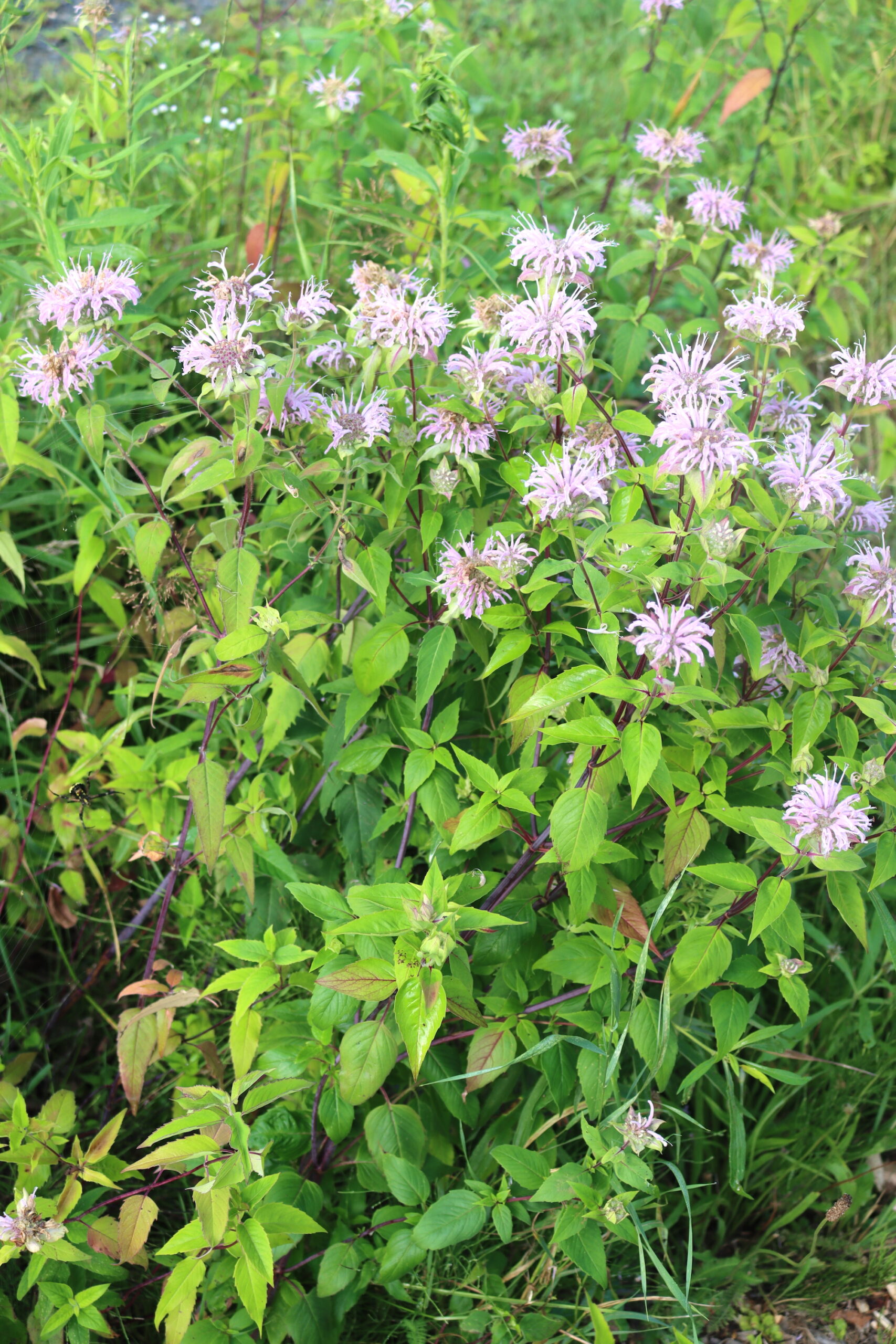
When to Find Wild Bergamot
Wild Bergamot is a perennial but dies back every year in the fall. It’s quick to take off in the spring, and you can forage for the stems and leaves that shoot up from the rhizomes early in the season.
However, most foragers prefer to harvest the flowers in addition to the leaves for both culinary and medicinal use. Depending on where you live and the yearly weather conditions, you may spot Wild Bergamot blooming between June and September.
Typically, it blooms for about six weeks.
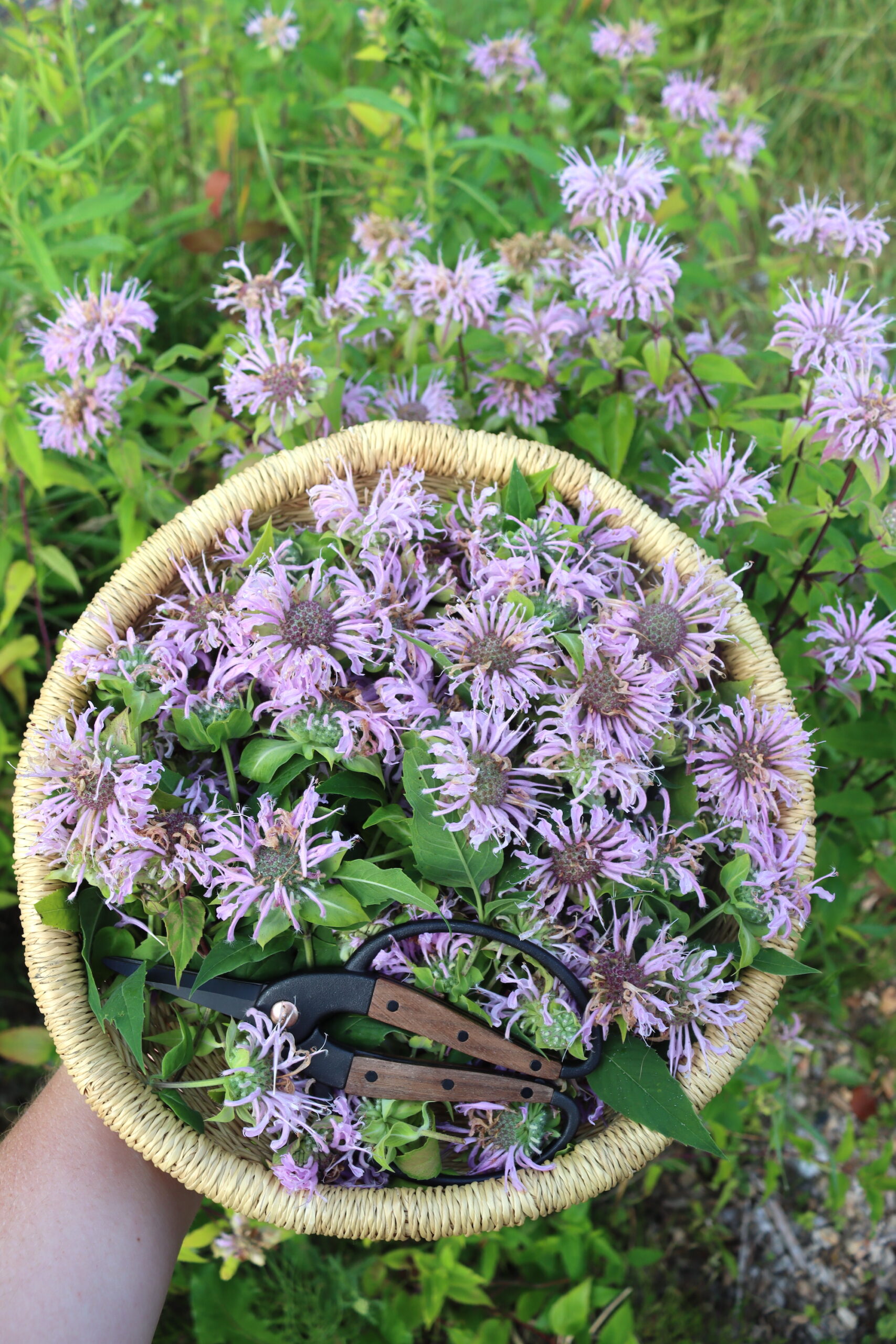
Identifying Wild Bergamot
It’s common to find Wild Bergamot growing in dense clumps as it can spread through seeds and underground rhizomes. Before flowering, Wild Bergamots’ green, lance-shaped leaves, and medium-height stems can be challenging to pick out amid other herbaceous plants, particularly if it’s not growing in a dense patch. However, the lovely minty, herbal aroma of the leaves and square stem can help you to pick it out.
Wild Bergamot is easy to identify in flower as it puts on quite the show! Wild Bergamot’s showy, lavender, pom-pom-like flowers are easy to spot, even for the beginner forager. They look a bit like something from a Doctor Suess book.
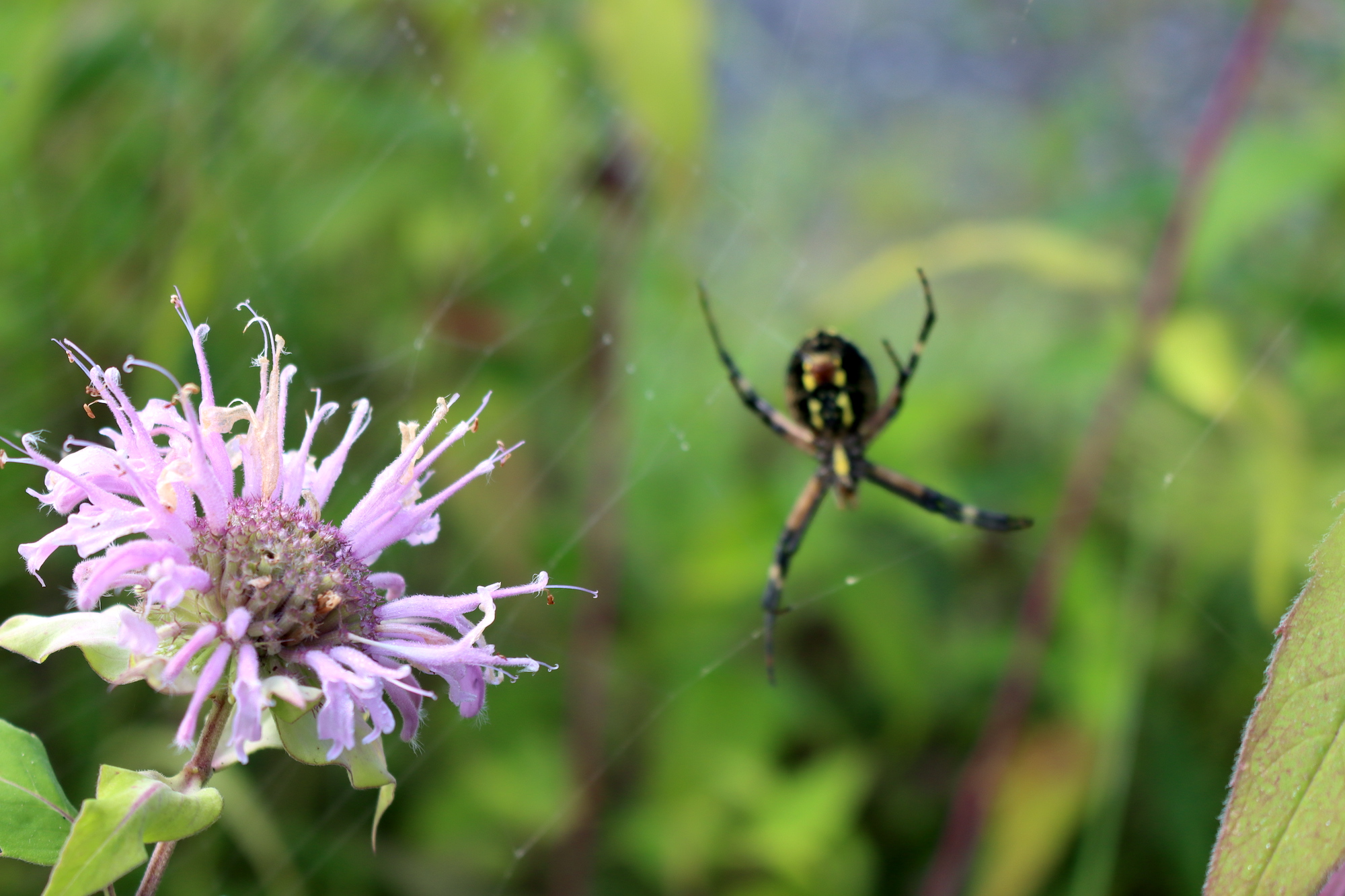
Wild Bergamot Leaves
Wild Bergemot has oppositely arranged green leaves with distinct petioles or leaf stems. The leaves are lance-shaped or occasionally deltoid-lanceolate and have slightly toothed margins.
The leaves are usually 2 to 3 inches long and may be hairy or sparsely hairy.
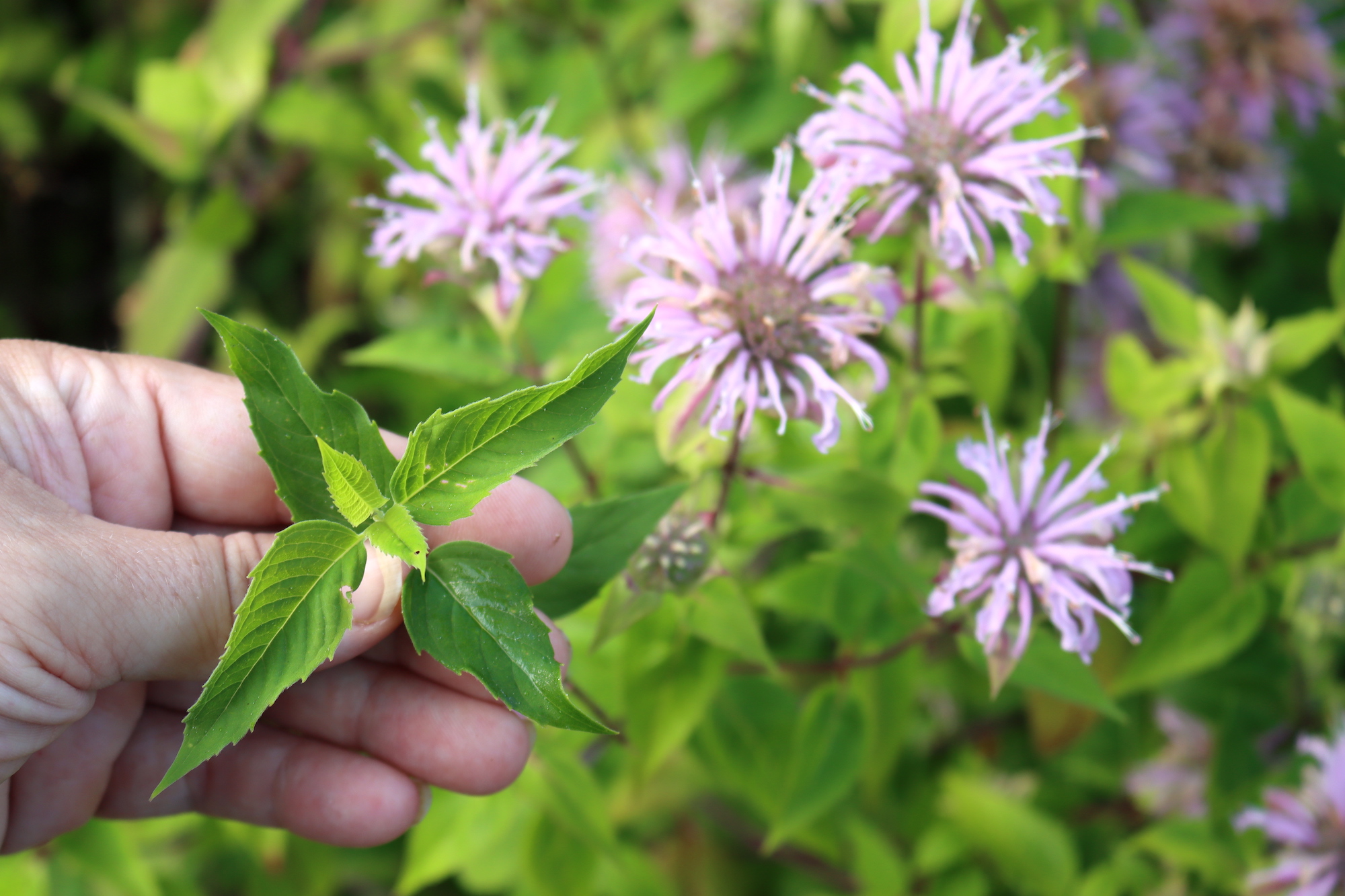
Wild Bergamot Stems
Wild Bergamot has branching, hairy stems that usually reach 2 to 4 feet tall. Like other members of the mint family, Wild Bergamot features characteristic square stems.

Wild Bergamot Flowers
Wild Bergamot flowers typically bloom from June to September. The flowers form in solitary clusters at the top of the stem and have a ragged, pom-pom-like appearance. Each cluster is about 1.5 inches long and comprises 20 to 50 lavender-colored, tube-like flowers.
The individual flowers have a wider lower lip and a broader, slightly downy upper lip.

Wild Bergamot Roots
Wild Bergamot has a strong, deep, branching root system and shallow underground rhizomes. These rhizomes allow the plant to spread and form clusters.
Wild Bergamot Look-Alikes
Where their ranges overlap, it can be easy to confuse Wild Bergamot with the closely related Lemon Bergamot (Monarda citriodora). There are a few ways you can differentiate them:
- Lemon Bergamot stems and leaves have a citrus aroma.
- Lemon Bergamot’s flowers form in tiered clusters along the stem.
- Lemot Bergamot flowers may be pink, purple, or white.
- Lemot Bergamot is a self-seeding annual that lacks underground rhizomes.
You could also mistake Wild Bergamot for American Wild Mint (Mentha canadensis). However, there are a couple of ways to tell them apart:
- American Wild Mint usually only grows up to 18 inches tall.
- American Wild Mint leaves tend to be slightly smaller at 2 to 2 ½ inches long.
- American Wild Mint flowers form in tiered clusters above each set of upper leaves along the stem.
- American Wild Mint flowers may be bluish, pink, or white.
Ways to Use Wild Bergamot
Like other mints, Wild Bergamot is a versatile culinary herb that pairs well with sweet and savory dishes. Traditionally, the Tewa people used Wild Bergamot to season meat. Similarly, you can use it to flavor chicken, fish, wild game, or other meats. You can also use bergamot in fresh salads or as a garnish.
It also works well in desserts. Try Wild Bergamot in cookies, ice cream, syrup, and jellies, or the flowers can be candied. Traditionally, the Iroquois made drinks using Wild Bergamot. It works well in teas, cocktails, mocktails, and other beverages.
Medicinally, you can use the entire plant to create teas, tinctures, poultices, and gargles. Its antiviral and antimicrobial properties may help you fight off infections and illnesses. Wild Bergamot flowers also make especially beautiful and tasty oxymels, honey, and elixirs.
Wild Bergamot is full of volatile oils that can be helpful in the steam. Boil some Wild Bergamot or toss it in a bath and inhale it to help treat congestion, colds, and flu. You can also allow some to boil on the stove to allow the whole household to enjoy a pleasant aroma.
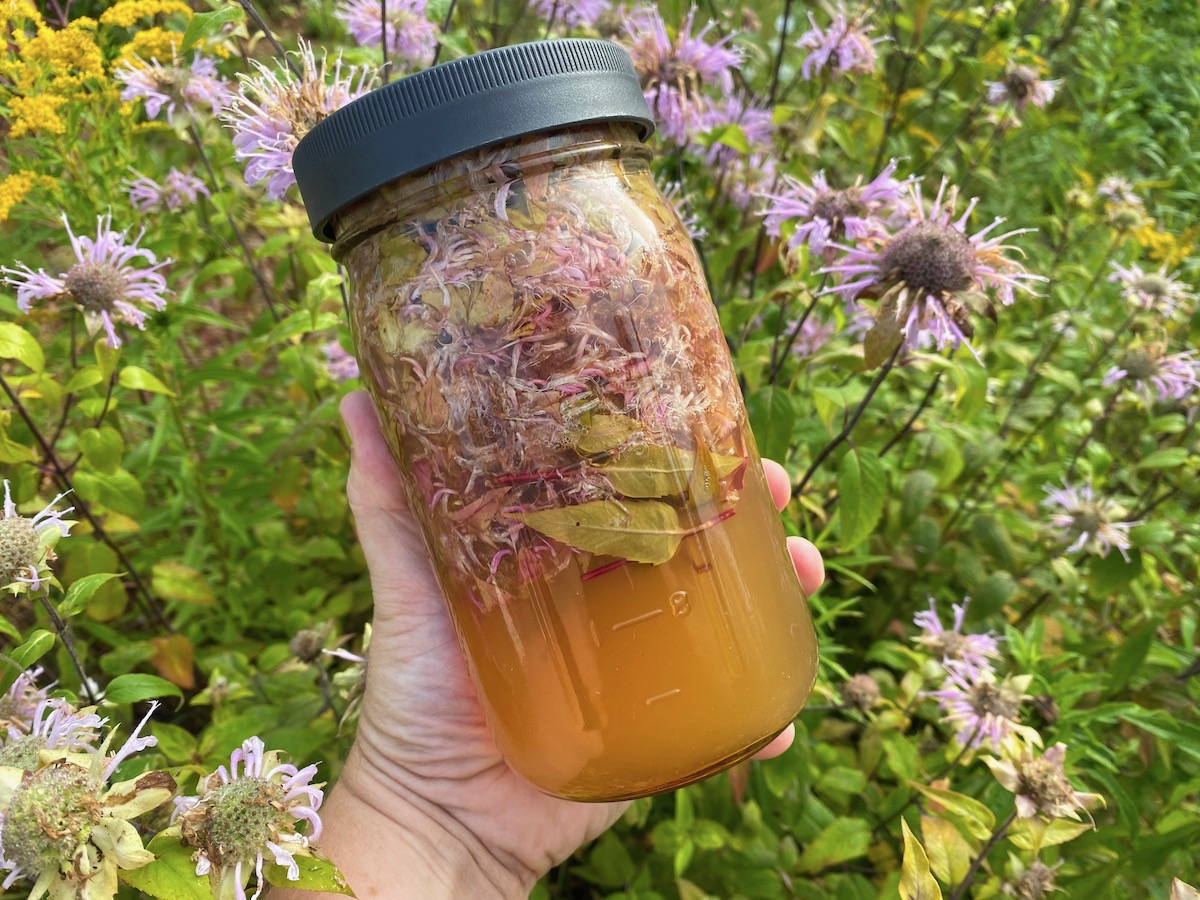
Wild Bergamot Recipes
- Preserve your summertime tomato abundance with this delicious recipe for Oven-Dried Tomatoes with Bergamot Leaves from The Forager Chef.
- He also has a great recipe for Italian Salmoriglio to use with grilled fish, chicken, and pork that’s excellent with Wild Bergamot leaves.
- If you’re up for a bit of baking, try this tasty Bee Balm Bread recipe from Premeditated Leftovers.
- To treat chapped, sore hands, try this Bee Balm Intensive Hand Butter from The Nerdy Farm Wife.
- Sometimes, medicine tastes great! Try this easy-to-take Bee Balm Oxymel or homemade bee balm tincture.
- Make some beautiful summertime cookies with this Bee Balm Cookies Recipe from Edible Wild Food.
- Or make a few unique (and fancy) gifts with this homemade bee balm jelly.
All of these recipes can be made with either wild or cultiavated bee balm. If you’re looking for more ideas, take a look at my list of ways to use bee balm.
Edible Wild Flowers
Looking for more edible and medicinal flowers?
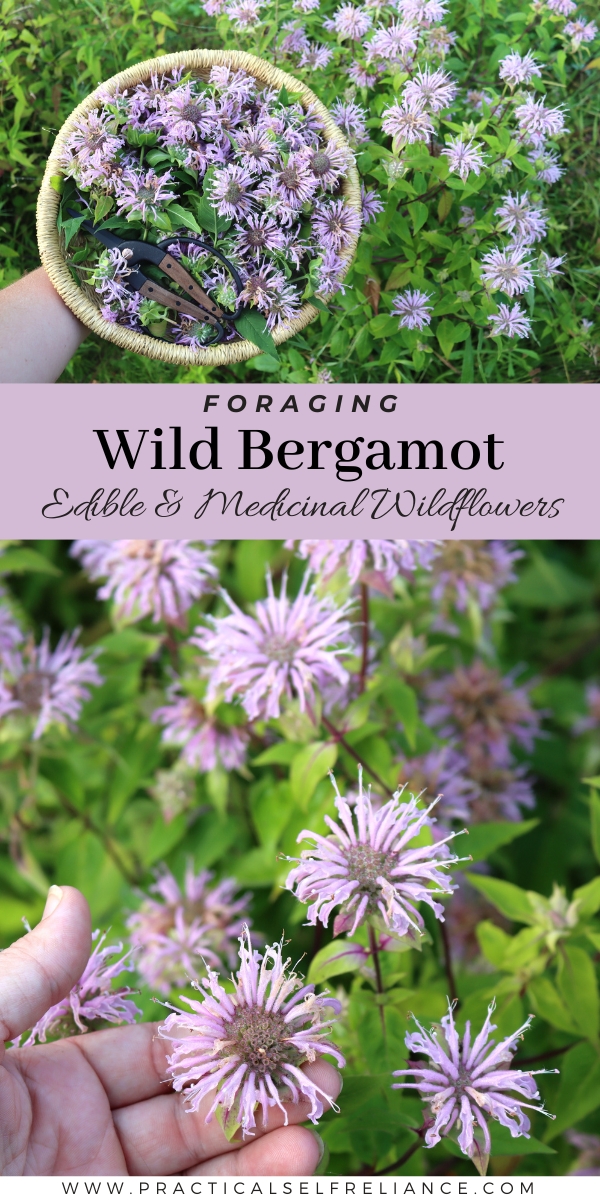
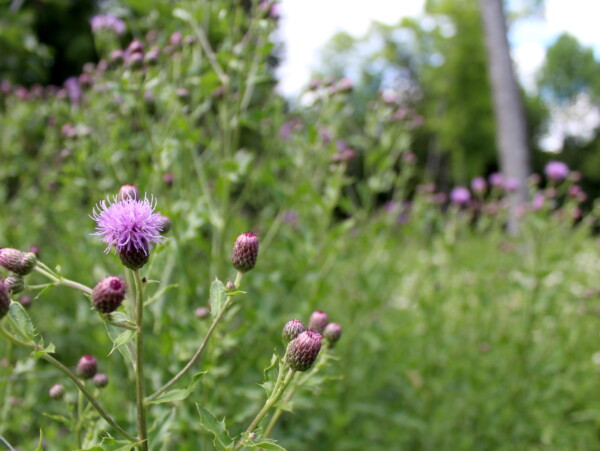

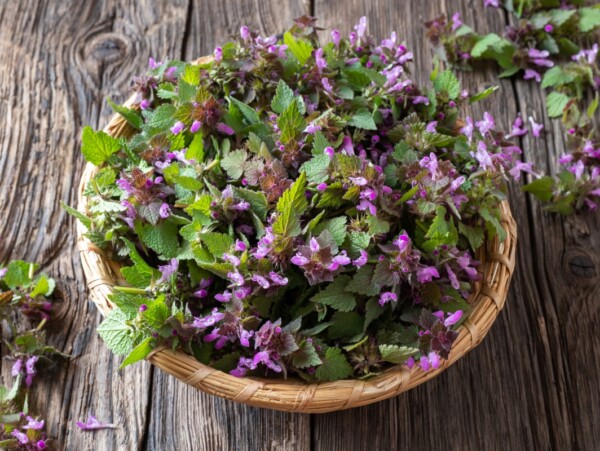
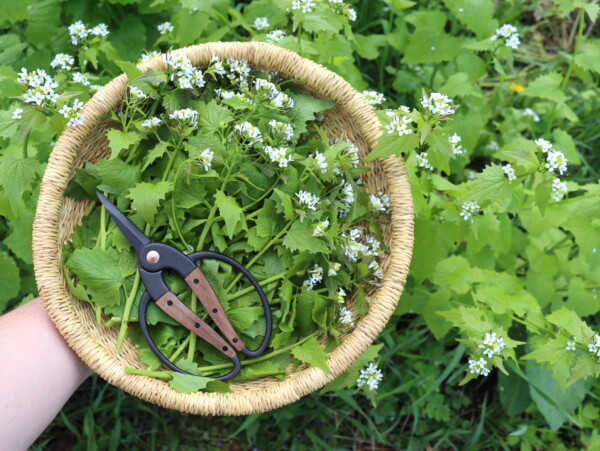





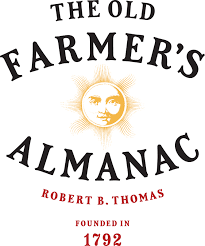




Amazing article. Thank you! 😊
You’re quite welcome!